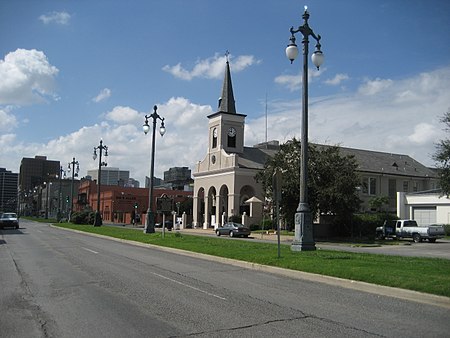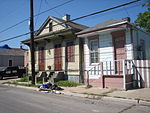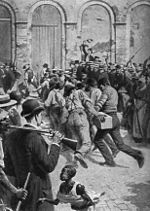Rampart Street

Rampart Street (French: rue du Rempart) is a historic avenue located in New Orleans, Louisiana. The section of Rampart Street downriver from Canal Street is designated as North Rampart Street, which forms the inland or northern border of the French Quarter (Vieux Carre). Crossing Esplanade Avenue, the street continues into the Faubourg Marigny neighborhood, then splits off from St. Claude Avenue to become a single-lane, one-way street through residential neighborhoods, and continues into the Bywater neighborhood. With a break at the Industrial Canal, Rampart Street resumes in the Lower Ninth Ward. Upriver from Canal, it is designated as South Rampart Street, and runs through the New Orleans Central Business District and continues to St. Andrew Street. In the 19th century, the "South Rampart Street" designation continued into Uptown New Orleans; this section is now named Danneel Street.
Excerpt from the Wikipedia article Rampart Street (License: CC BY-SA 3.0, Authors, Images).Rampart Street
North Prieur Street, New Orleans Storyville
Geographical coordinates (GPS) Address Nearby Places Show on map
Geographical coordinates (GPS)
| Latitude | Longitude |
|---|---|
| N 29.9683 ° | E -90.0739 ° |
Address
North Prieur Street 1007
70116 New Orleans, Storyville
Louisiana, United States
Open on Google Maps







